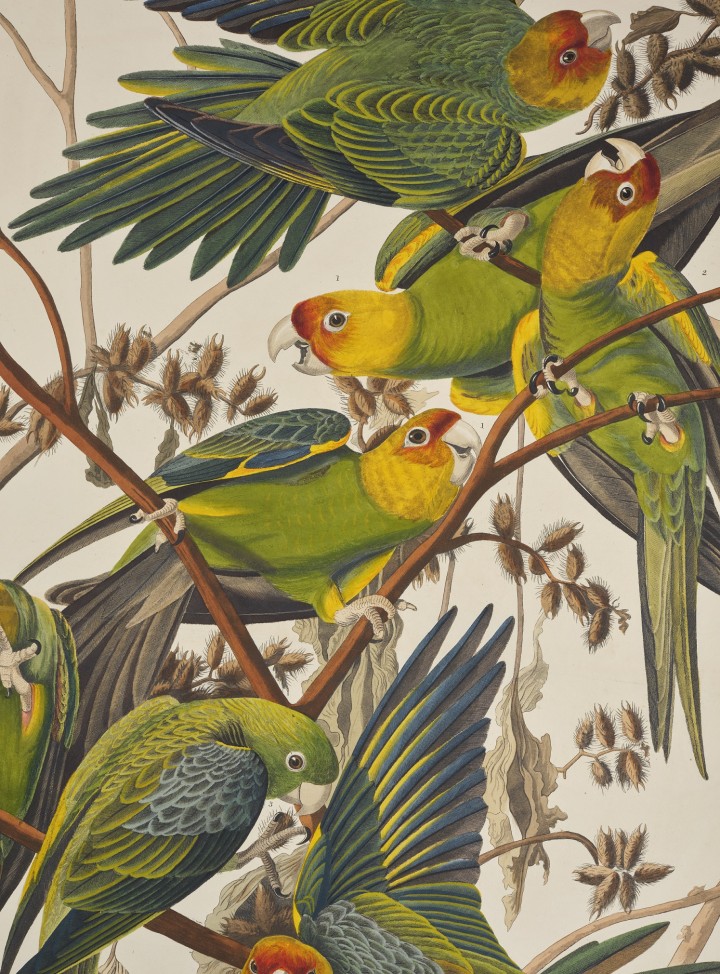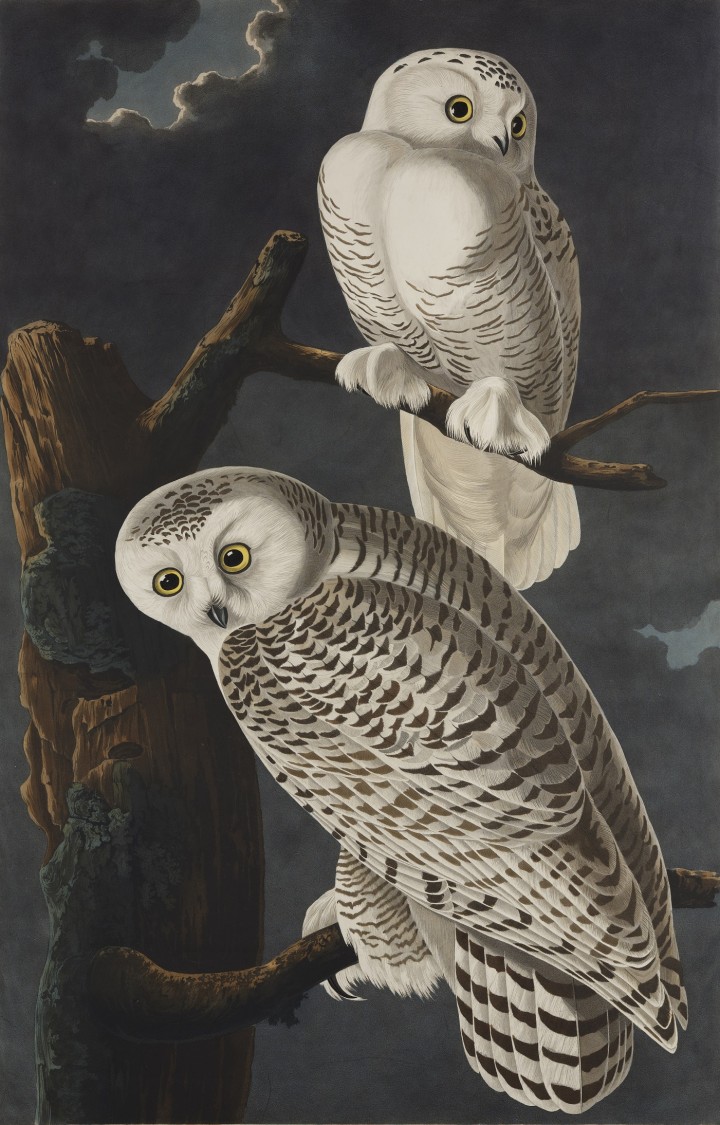Scottish Art News
Latest news
Magazine
News & Press
Publications
Audubon’s Birds of America
By Susan Mansfield, 23.03.2022

In 1826, naturalist and artist John James Audubon arrived in Edinburgh intending to stay for a week. However, finding that his work - and his ambitious idea for a comprehensive book of life size illustrations of the birds of America - was much more warmly received here than in the US, he stayed for five months. It was Edinburgh engraver and publisher William Home Lizars who produced the first ten plates for his gargantuan project.
Published in instalments for subscribers between 1827 and 1838, and featuring 435 hand-coloured plates, Birds of America is now one of the world’s rarest and most valuable books. A partial set belonging to National Museums of Scotland, most of which have never been exhibited before, form the basis of this show, which is a fascinating introduction to the man and his work.
While stylised and a little old-fashioned to modern eyes, Audubon’s birds were ground-breaking at the time in the way they captured movement, behaviour and habitat. He observed his subjects extensively in the field and refused to paint from stuffed birds as most of his contemporaries did. Self-taught both as an artist and naturalist, he used the new and experimental medium of watercolour.
 Print depicting Snowy Owls from Birds of America, by John James Audubon. Image © National Museums Scotland
Print depicting Snowy Owls from Birds of America, by John James Audubon. Image © National Museums Scotland
While Birds of America contains no text (a loophole which allowed Audubon to avoid giving 11 copies to Britain’s copyright libraries) he published a companion volume, ‘Ornithological Biography’, of his science and observation. In extracts which accompany the pictures, we get a flavour of his enthusiasm for his subject - the joy of seeing a swallow-tailed hawk in flight or hearing the song of the Louisiana water thrush.
He observed, entertainingly, that a barn owl disturbed by day will fly in “an irregular, bewildered manner”, and coos over the “devoted affection” of a pair turtle doves. He describes spending 14 days painting a golden eagle which “nearly cost me my life”. The prints and text are shown alongside birds from the museum’s taxidermy collection, including a wild turkey gifted by Audubon to Robert Jameson, Professor of Natural History at Edinburgh University.
Audubon emerges as a colourful, contradictory figure, the illegitimate son of a plantation owner in Haiti, a bankrupt who captivated Edinburgh society by dressing as an American woodsman, a teller of tall tales who was criticised in his lifetime both for his science and for his art. Yet, his achievement in Birds of America, is a monumental legacy in art and publishing.
It might be going too far to claim him (as the exhibition nearly does) as a kind of protoenvironmentalist. He was a man of his time, a keen hunter who clearly shot far more birds than he needed for his studies. However, he was one of the first to observe the effects of emerging industry on bird habitats and the threat posed by humanity to the natural world.
Audubon’s Birds of America is exhibited at the National Museum of Scotland until the 8th May.






